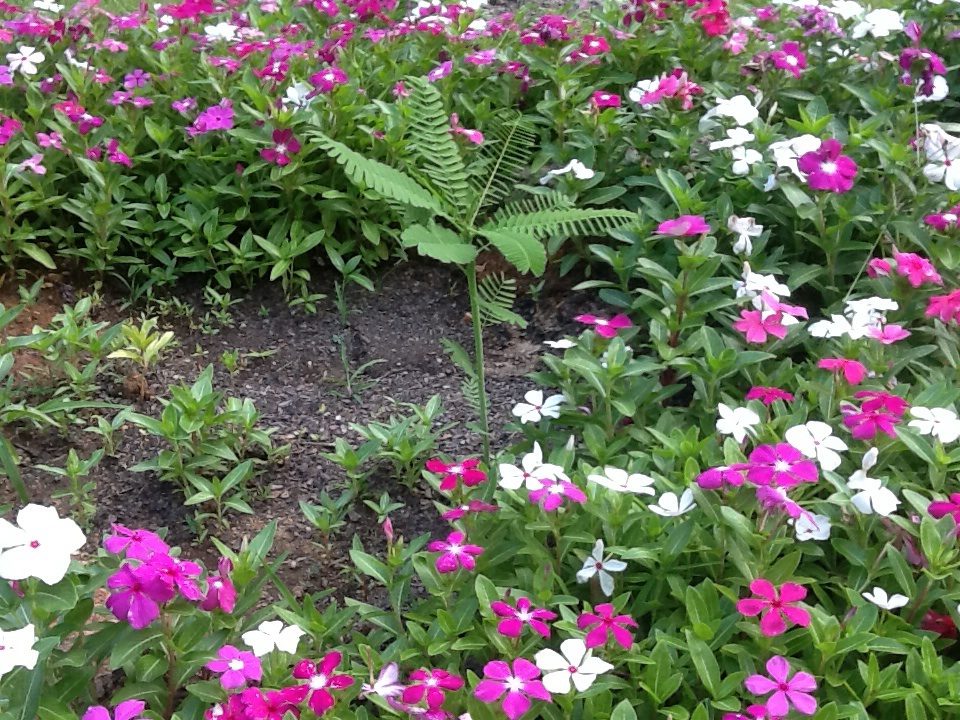Name that plant
Details:
-
Date Photo Taken
07 / 07 / 2014
-
Season Photo Was Taken
Summer
-
Region Photo Was Taken
Southeast
-
City
Baldwin County
-
State
Georgia
-
Posted by
cstric
Notes:
Came up in a bed of volunteer flowers where a rotted pine tree stump had been.



Comments
Jim Unregistered says:
Thanks, stone. I’m keeping this thread as a reference After viewing all current candidates pretty carefully, I’ve decided the plant persisting in my back lawn is chamberbitter, after all.
July 21st, 2014 at 11:51am
stone Master Identifier says:
‘@Jim… I found another plant with leaves like chamber bitter. Deer vetch: http://www.tropicalforages.info/key/Forages/Media/Html/Aeschynomene_americana.htm I can probably keep finding plants that resemble phyllanthus… Have you taken a pic of your plants yet?
July 21st, 2014 at 9:27am
stone Master Identifier says:
http://gardens-in-the-sand.blogspot.com/2012/08/cloudless-sulfur.html
July 14th, 2014 at 8:35am
stone Master Identifier says:
Actually… Coffee weed is a different plant. Check this post about the cloudless sulfur butterfly laying eggs on coffee weed and partridge pea. @jim… You should check the link as well. The partridge pea is a very desirable wildflower that has similar leaves to the chamber bitter weed… Coffee weed, partridge pea and Sesbania all have leaves that fold up at night… Very cool… They all improve the soil by adding nitrogen, and the flowers and caterpillars are total bonus!
July 14th, 2014 at 8:43am
cstric Registered says:
Stone, thanks very much for the info. I viewed your photos and believe my weed matches your Sesbania herbacea, what we used to call coffee weed or coffee bean. I didn”t recognize it without the yellow flowers. Will keep watching it for a while longer. Glad to know butterflies will love it!
July 11th, 2014 at 10:50pm
Jim Unregistered says:
I must defer to stone’s expertise (and thanks, stone). Are there other mimosa-mimickers in the small weed category? Because, actually, none of the above seems to quite fit the small, weedy plant growing in profusion, that I believe I sucessfully ID’d a couple of years ago.
July 11th, 2014 at 4:24pm
stone Master Identifier says:
Not chamberbitter…. compare with danglepod (Sesbania herbacea) It is actually a valuable butterfly plant… and improves the soil… While some people consider sesbania a weed… I had to plant seeds this year when none came back from last years plantings… Very poor performance from a so-called weed… I posted some pictures here: http://gardens-in-the-sand.blogspot.com/2013/08/ragweed-daze.html It will get tall, so… you may need to move the plant to a location where height is an asset… but as an annual… it would be best to enjoy it where it is… and collect (next year’s) seeds this autumn.
July 10th, 2014 at 2:31pm
Jim Unregistered says:
Looks like it develops a woody stem, too – grows into a shrub.
July 10th, 2014 at 10:17am
Jim Unregistered says:
In depth info on the weed that I just discovered right on Walter’s site: http://www.walterreeves.com/lawn-care/chamberbitter-mimosa-weed/
July 10th, 2014 at 10:36am
cstric Registered says:
Thanks, Jim. I’m watching it every day until I can determine if it really is a weed. (Sorry the photo got turned upside down for some reason. )
July 9th, 2014 at 6:04pm
Jim Unregistered says:
There is a common weed in Georgia that looks like a very young mimosa. I don’t remember its name, but I know I wouldn’t be able to tell them apart until either the weed develops into something that’s clearly a weed, or the mimosa grows a woody stem and persists.
July 9th, 2014 at 12:26pm